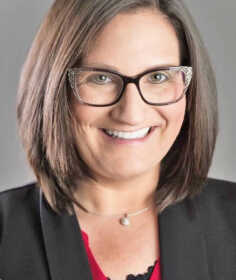TOP STORY OF THE DAY, brought to you free by WICU: Don’t be so quick to judge Community Corrections offenders

Community Corrections is a lot more than “criminals wearing ankle bracelets.”
“So many people see that ankle bracelet, and they see a criminal. It’s like judging a book by its cover, and you shouldn’t do that,” said Koby Bohnert, Executive Director of Clay County Community Corrections. “These are not always drug cases. Often these are people who made some bad choices, and they are now working toward a better life.”
When a wrong decision leads to an arrest, and the Court: releases an offender to at-home detention while awaiting trial, issues terms of bond release, serve a sentence in incarceration, places on probation, or orders completion of community service or substance abuse treatment - Community Corrections supervises all these programs for adults and juveniles.
“I don’t judge any of my offenders. This could happen to anyone,” said Bohnert, who believes in second chances. “Inside, they are a different person. They just don’t realize it yet. That is what Community Corrections is for: It’s an opportunity to fix their mistakes and go in a new direction.”
Bohnert says the program’s vision is to successfully divert non-violent adults from incarceration through court-ordered electronic home detention, intense supervisory, educational programs, and the Community Transition Program. Juveniles participating in Court Ordered Placement for Education (COPE) are also part of Community Corrections.
Community Corrections staff members do a preliminary evaluation and prescreening of an offender that will help determine eligibility before a judge issues the order for placement.
“We want to create positive personal changes in the lives of our participants,” said the director, who meets each new offender personally when they arrive on their first day. “They pay the fees to participate in these programs.”

Participation requires learning responsibility, especially on “hookup days.”
“When they arrive that first day, we sit them down and go over everything. They sign documents stating they were advised of the terms, conditions, and the rules expected of them.”
It’s daunting, according to Bohnert, and maybe the most challenging part is realizing they have to make some difficult changes. So do their family members and friends.
“They have to get rid of those bad peers. They are always connected to someone that was there when they made a bad choice. That’s when they have to change phone numbers, get off social media, and get away from bad peers and start a new circle of life,” said Bohnert. “They need that family support, and we are big on family support here.”
An offender’s family might have to make the same changes the offender has to follow.
Example: If a term of the program is no alcohol, there can be no alcohol in the home where an offender stays. Surveillance officers will make home visits, and if alcohol is found — even if it belongs to someone else — the offender is violated.
If no drugs are allowed, no CBD oil products can be in the home an offender stays. If it’s guns, they all have to be removed no matter who owns them.
“They often come in here thinking we are the bad guys. We are not the enemy. We just want them to be honest and work with us,” Bohnert said. “We want them to help them do well, to succeed. We don’t want them to be behind bars, and it takes a while for them to realize that sometimes.”

Bohnert said the staff helps offenders find counseling, jobs, and clothes for job interviews if needed. The C.H.O.I.C.E.S. program is also available weekly. Help with completing their education or helping overcome a learning disability is also available. It takes learning a new way to communicate, but offenders often start to see things differently after a couple of visits.
“We want them to be gainfully employed,” said Bohnert, who goes to local businesses to encourage them to hire participants in the various programs at Community Corrections. “We want to help them become better citizens. That is the biggest thing we want the community to know about Community Corrections. We are here to help offenders find a new direction.”
Not everyone wants to change, and Bohnert said the staff members pick up on that quickly. Drug screen failures, violating home detention, finding alcohol or drugs during a home inspection, failure to go to work are behaviors reported to the courts.
“We still try to help them,” she said. “But we become the bad guys again when an offender returns to bad decisions. They have to make the right decisions, make the changes for the better. We can help them, but we can’t do it for them.”
Community Transition Program
Offenders serving time at the Indiana Department of Corrections who have done well and are ready for early release can be recommended for the Community Transition Program.
Bohnert interviews prospective offenders and receives an I.D.O.C. progress report to decide whether to allow them to be in the local program.
If accepted, offenders are on the C.T.P. program roughly 30 days before transitioning to home detention. The state pays for this time, which is used to establish acceptable housing and find employment. Once transitioned to home detention, the offender pays all of the program fees.
“A lot of people don’t realize offenders doing well in prison could have this opportunity,” said Bohnert. “I used to think Community Corrections was just about criminals wearing ankle bracelets. There is a whole lot more going on here; we are helping change lives.”
